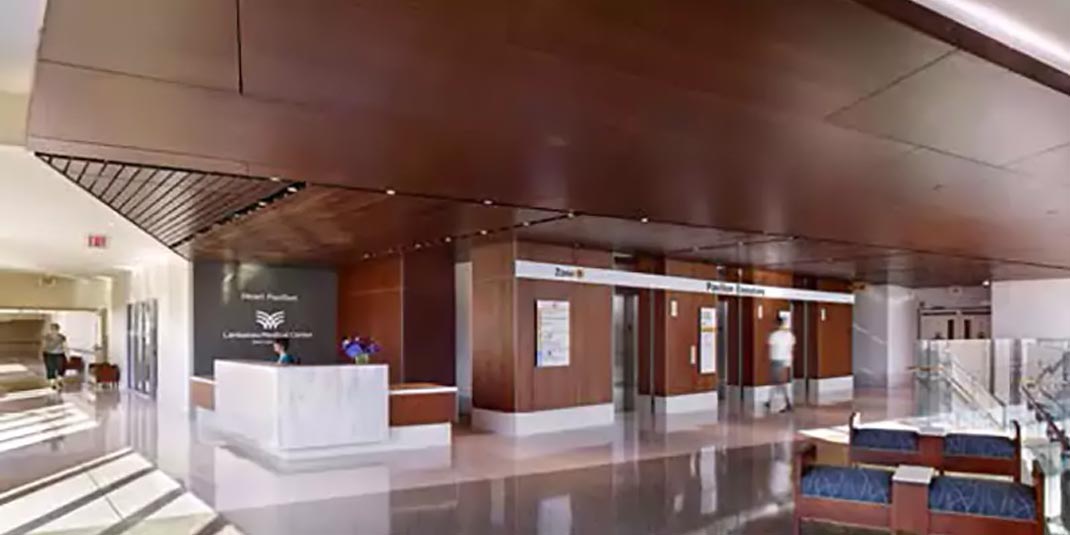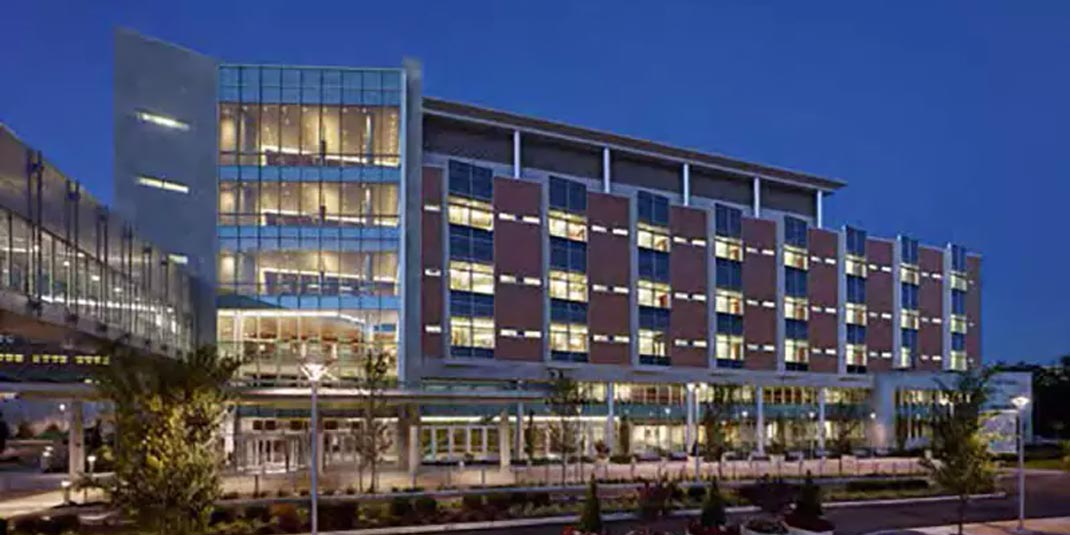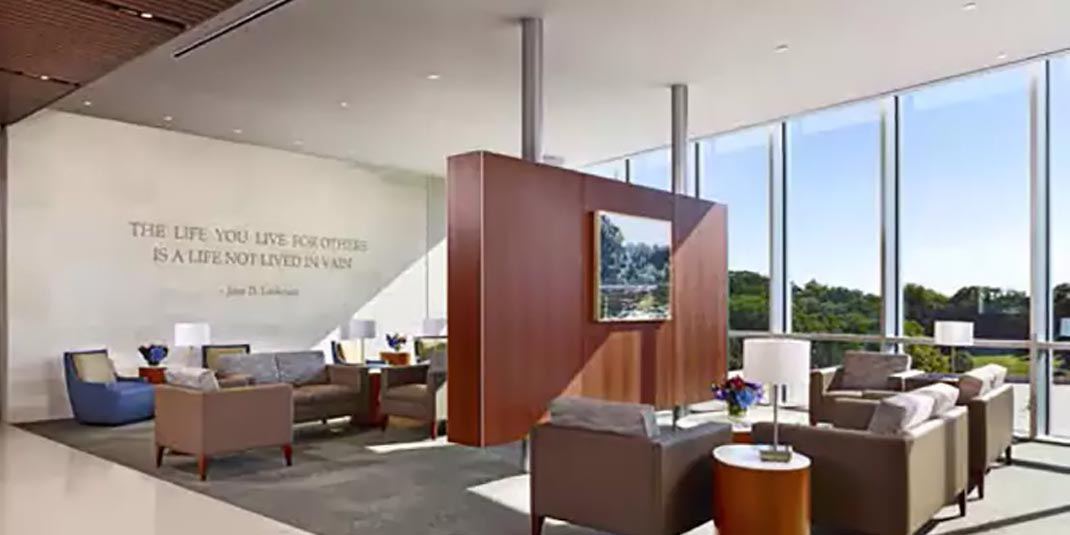Lankenau Medical Center Heart Pavilion
SITUATION
The Lankenau Medical Center is one of the Philadelphia region’s most trusted and honored hospitals. So when it came to designing the 600,000 square foot expansion, the design team at RTKL wanted to find the perfect balance of cutting-edge technology and natural materials, while pulling elements from the rich aesthetic of the surrounding community.
And with the goal of achieving LEED certification, the RTKL team incorporated a number of sustainable interior, exterior and structural components that helped the Heart Pavilion to be selected as one of three tour stops on the 2013 Greenbuild Conference’s Green Building Tour, which highlights sustainable and innovative approaches to healthcare design and construction.
Main Line Health is focused on patient safety, efficiency and durability, so we wanted to create a high-performance environment with a nice appearance that will benefit patients and last a long time.
— Dana Brandle, Associate at RTKL, lead interior designer and project manager
OBJECTIVE
To create a sustainable environment that promotes health and wellbeing, the architectural team drew on evidence-based design principles to select materials that are durable, easily maintained and environmentally sustainable.
One such evidence-based philosophy, Biophilic Design, or the incorporation of nature into interior design concepts, addresses humans’ innate attraction to other living organisms and has long been recognized by both scientific and design communities. It was also at the forefront of the Lankenau project, acting as a strong driver when selecting artwork, materials and use of light. “We tried to focus on real nature,” Brandle says.
The team also drew heavily on the architectural language that had already been established on the Lankenau campus.
Lankenau Medical Center has a rich history and collection of art and artifacts, so we wanted to make sure the space provided an appropriate backdrop.
— Dana Brandle, Associate at RTKL, lead interior designer and project manager
DESIGN
The design aesthetic is straightforward and honest, so the RTKL team looked for materials that would perform well, be easily maintained, and meet our design aesthetic, including concrete, glass, metal and natural woods. After looking at faux products and real veneers, the RTKL team found Veneer-Art 982 Architectural Sapele, a rich-toned veneer that offered the right balance of luster and depth.
Lamin-Art’s Veneer-Art collection exceeded our criteria by combining the high performance of a laminate and maintained the visual qualities of real wood.
— Angela Crum, Associate of RTKL
And for the lobbies and reception, the design team was able to work with Lamin-Art to create a custom color of the Sapele design with a quarter cut book matched install.
The customization process between our design team, our local Lamin-Art representative and their factory was seamless with effective communication and a quick turnaround.
— Angela Crum, Associate of RTKL
And because the wood grain in the Veneer-Art designs are natural and unique to each sheet, the team knew they wouldn’t have to worry about repeat in their large-scale applications in the lobby area, including elevators, statement walls and nurse stations Most importantly, they ensured that the Heart Pavilion in Lankenau Medical Center is a tranquil, cutting edge facility that will last for decades by selecting materials that are durable, easily maintained and environmentally sustainable.
“The final product achieved the natural vertical graining, soft reflectance and variety of rich colors of a real wood veneer but with the promise of longevity for our client,” Crum says..
Click here to download a PDF version of this case study.








The information below is required for social login
Sign In
Create New Account